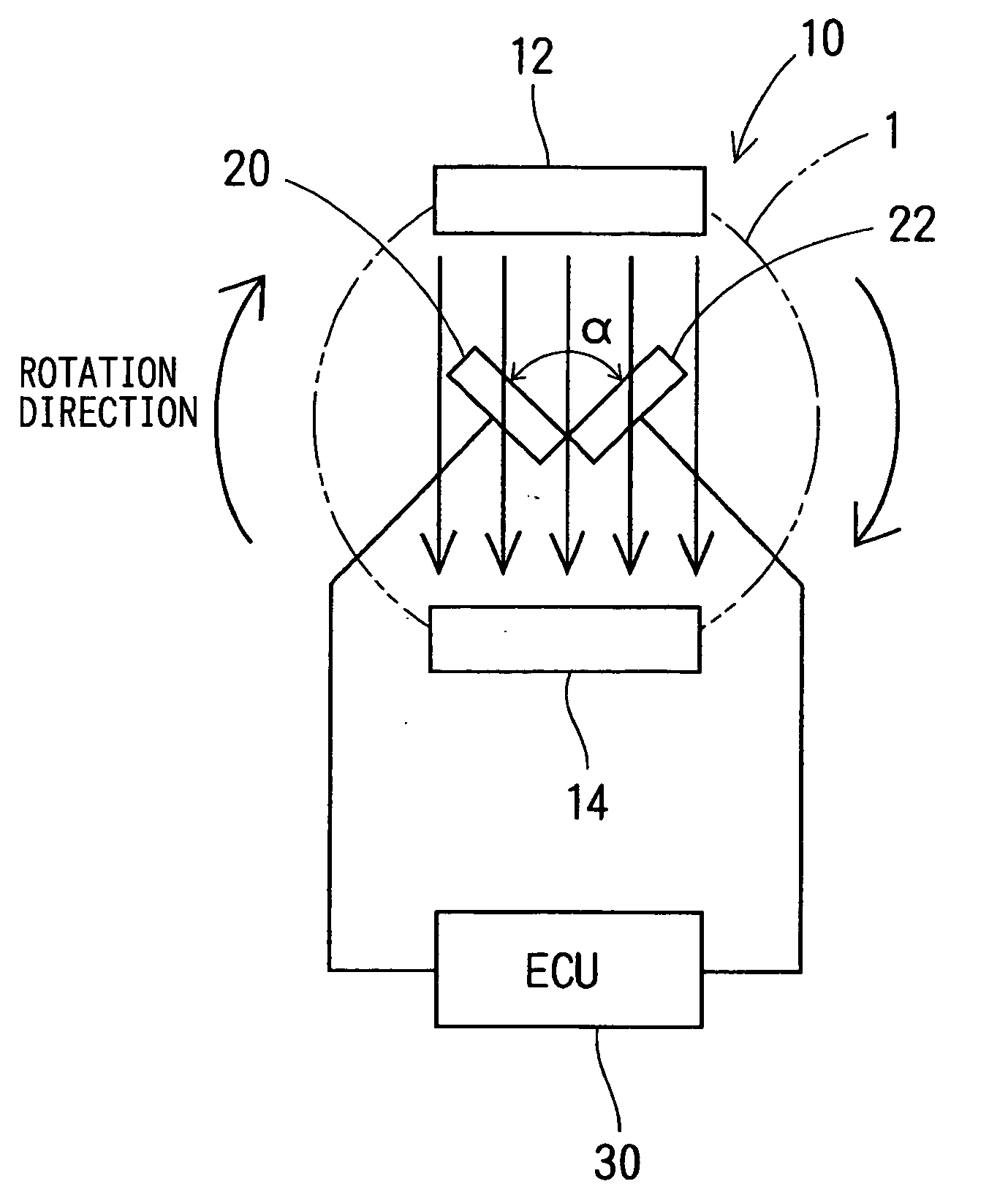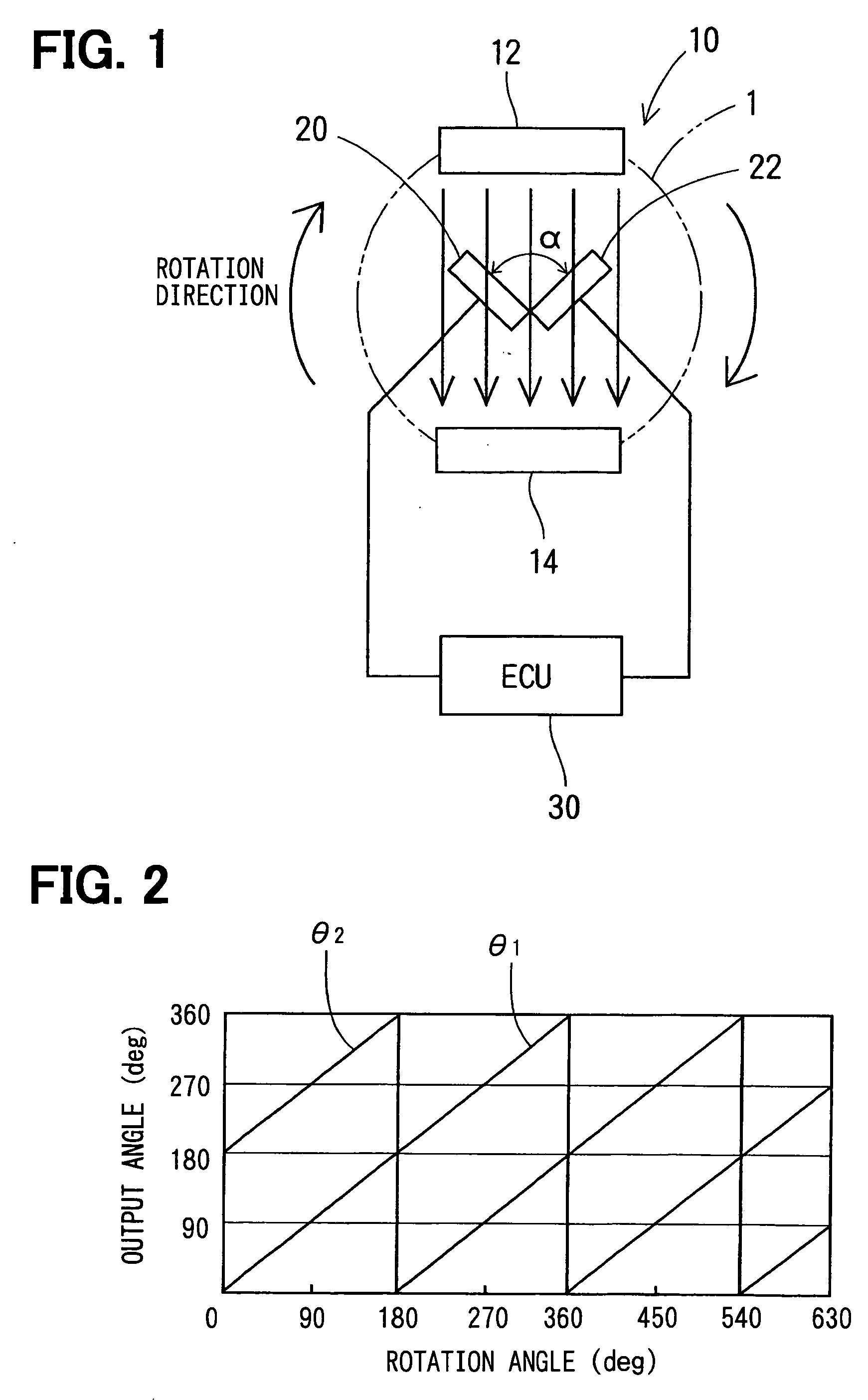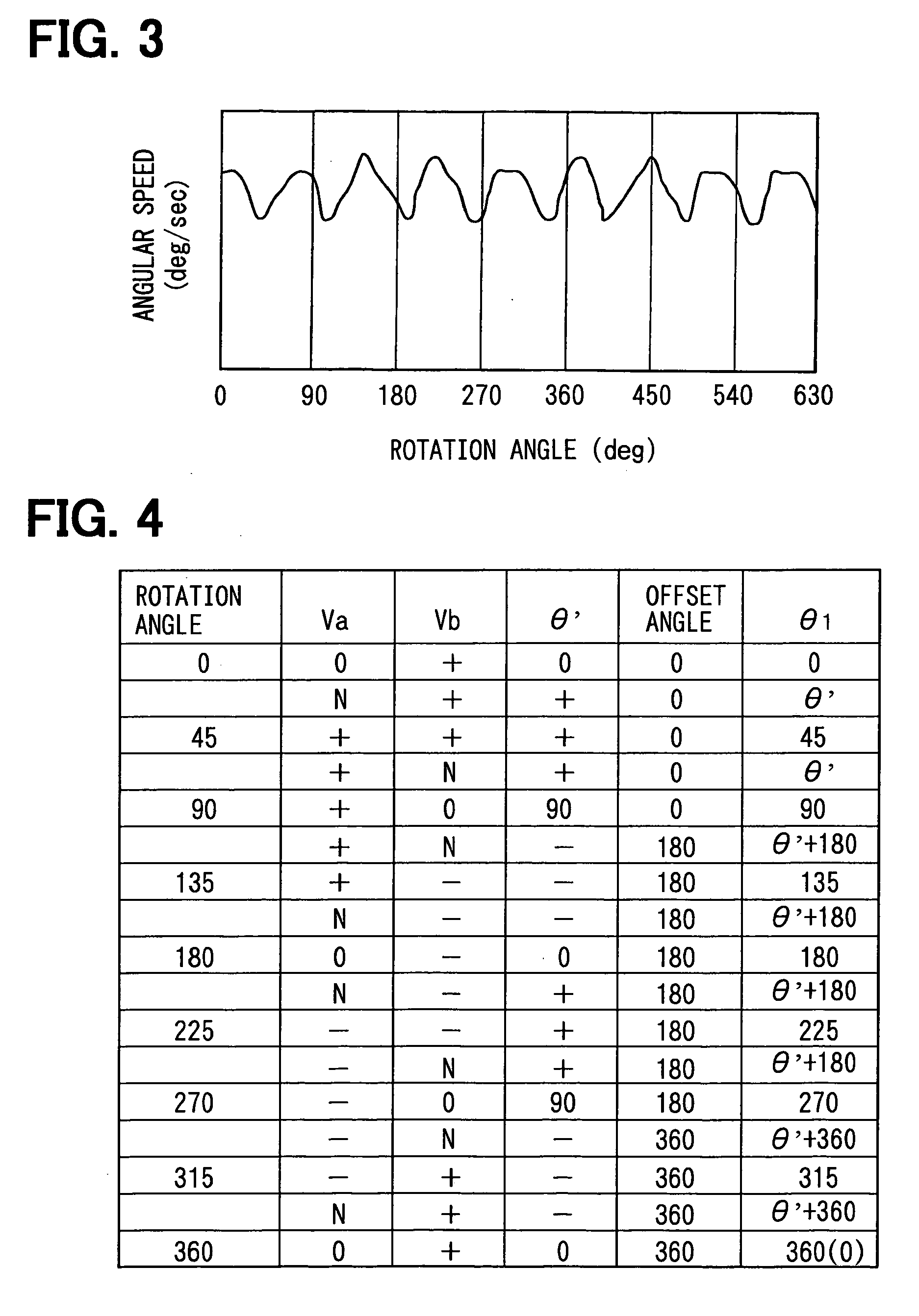Angular speed detecting device
a technology of angular speed and detection device, which is applied in the direction of galvano-magnetic hall effect devices, digital computer details, instruments, etc., can solve problems such as difficulty, and achieve the effect of improving angular speed detecting and accurately detecting angular speed
- Summary
- Abstract
- Description
- Claims
- Application Information
AI Technical Summary
Benefits of technology
Problems solved by technology
Method used
Image
Examples
first embodiment
[0031] An angular speed detecting device 10 according to the invention to be used for detecting the angular speed of a rotating object 1, such as a crankshaft or a vehicle wheel, will be described with reference to FIGS. 1-5, 16 and 17. The angular speed detecting device 10 includes a pair of permanent magnets 12 and 14, a pair of hall elements 20 and 22 and an electronic control unit (hereinafter referred to as the ECU) 30.
[0032] The permanent magnets 12, 14 provide a generally even magnetic field or a constant magnetic flux density in the space between them. The pair of hall elements 20, 22 have the same construction and disposed in the space between the permanent magnets 12, 14 to incline to each other at an angle α (e.g. 90 degrees) and to the magnetic field at half the angle α . Therefore, when the rotating object 1 rotates and the hall elements are electrically powered, the hall elements 20 generates a sinusoidal voltage signal Va and the hall element 22 generates a sinusoidal...
second embodiment
[0041] An angular speed detecting device 10 according to the invention will be described with reference to FIGS. 6-8. The angular speed detecting device 10 is substantially the same in construction except for the processing program for obtaining the angular speed of the rotation object 1, which is installed into the ECU 30.
[0042] The ECU 30 provides a pair of saw-tooth-wave curves of output angles θ1 and θ2 by adding offset angles to the trigonometric value θ′, as shown in FIGS. 7 and 8, in which character N indicates that the plus or minus sign is neglected to distinguish the angular position. In this case, plus and minus sign of the sum (i.e. Va+Vb) and difference (i.e. Va−Vb) of the voltage signals Va and Vb are used to distinguish the angular position of the rotating object instead of the plus and minus sign of each of the voltage signals Va, Vb. The sum and the difference can be expressed as follows:
Va+Vb=kBI·sin θ+kBI·cos θ={square root}{square root over (2)}kBI·sin (θ+45) ...
third embodiment
[0045] An angular speed detecting device 40 according to the invention will be described with reference to FIG. 9.
[0046] The angular speed detecting device 40 includes a pair of permanent magnets 12 and 14, three hall elements 20, 22 and 24 and the ECU 30.
[0047] The hall elements 20, 22, 24 have the same construction and disposed in the space between the permanent magnets 12, 14 to incline to each other at an angle of 90 degrees. Therefore, when the rotating object 1 rotates and the hall elements are electrically powered, the hall elements 20, 22 and 24 generates sinusoidal voltage signals that are 90 degrees in electric angle different from another. In other words, the hall element 20 generates a sinusoidal voltage signal Va, the hall element 22 generates a sinusoidal voltage signal Vb, and the hall element 24 generates a sinusoidal voltage signal Vc, as shown in FIG. 10.
[0048] The ECU 30 calculates, using the expression (5) and (6), a trigonometric value θ0′ from the voltage sig...
PUM
 Login to View More
Login to View More Abstract
Description
Claims
Application Information
 Login to View More
Login to View More - R&D
- Intellectual Property
- Life Sciences
- Materials
- Tech Scout
- Unparalleled Data Quality
- Higher Quality Content
- 60% Fewer Hallucinations
Browse by: Latest US Patents, China's latest patents, Technical Efficacy Thesaurus, Application Domain, Technology Topic, Popular Technical Reports.
© 2025 PatSnap. All rights reserved.Legal|Privacy policy|Modern Slavery Act Transparency Statement|Sitemap|About US| Contact US: help@patsnap.com



